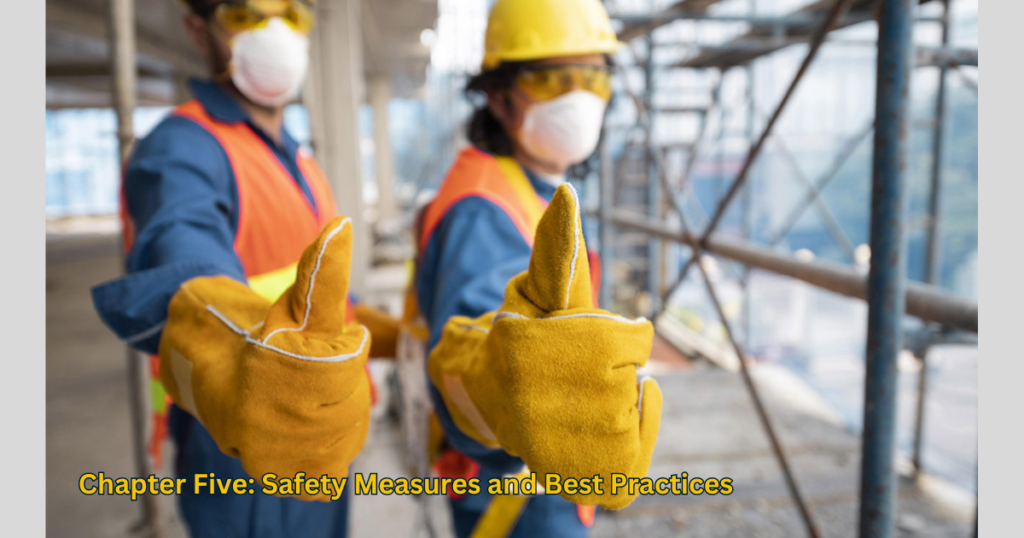Safety reigns supreme amidst the metal clang and machinery hum in a bustling construction site. Imagine workers relying on hoisting machinery to lift heavy loads to towering heights. Now, consider the potential catastrophe if these machines were not diligently inspected. It’s a nail-biting tale of risks and responsibilities.
But fear not, dear reader, for in this groundbreaking article, we unveil the latest insights on a crucial question: How often must the competent person inspect hoisting machinery? Strap in as we unravel the mysteries of machinery maintenance and safety protocols.
Table of Contents
ToggleUnderstanding the Significance of Hoisting Machinery Inspections
Hoisting machinery is pivotal in construction, manufacturing, and various industrial sectors. These mechanical marvels lift heavy loads from cranes to forklifts with precision and power. However, with great power comes great responsibility – which rests upon the shoulders of competent personnel inspecting these machines.
Why Hoisting Machinery Inspections Matter
According to data from the Occupational Safety and Health Administration (OSHA), approximately 22% of workplace fatalities in the construction industry involve crane-related accidents. These sobering statistics underscore the critical need for regular inspections and maintenance of hoisting machinery.
Preventing Accidents and Ensuring Workplace Safety
Hoisting machinery inspections are not merely bureaucratic formalities but lifelines in workplace safety. A comprehensive inspection regime can identify potential hazards, prevent accidents, and safeguard the well-being of workers.
Chapter One: The Role of the Competent Person

Defining the Competent Person in Hoisting Machinery Inspection
The term “competent person” may evoke images of caped crusaders swooping in to save the day. While their heroics may not be as flashy, competent persons are indeed the unsung heroes of workplace safety. But who exactly qualifies as a skilled person in the realm of hoisting machinery inspections?
Qualifications and Expertise
OSHA defines a competent person as someone with the knowledge, training, and experience to identify hazards and take corrective measures. This individual should be well-versed in relevant safety regulations and keen on detail.
Responsibilities of the Competent Person
The duties of a competent person extend far beyond mere visual inspections. They are entrusted with assessing equipment, conducting thorough examinations, and documenting findings. Their vigilance is the first line of defense against potential disasters.
Conducting Inspections
Competent persons are tasked with conducting periodic inspections of hoisting machinery by regulatory standards. These inspections may encompass visual checks, functional tests, and structural examinations to ensure the equipment’s integrity.
Reporting and Documentation
A crucial aspect of the competent person’s role is the meticulous documentation of inspection findings. Detailed reports are a compliance record and provide valuable insights for future maintenance efforts.
Chapter Two: Regulations and Guidelines

Overview of Relevant Safety Regulations
In the labyrinthine world of workplace safety, regulations serve as guiding beacons for employers and employees alike. Let’s navigate through the regulatory landscape governing hoisting machinery inspections.
OSHA Standards
OSHA sets comprehensive crane and derrick operations standards, outlining equipment inspection, maintenance, and operation requirements. Employers must adhere to these regulations to ensure a safe working environment.
Guidelines for Inspecting Hoisting Machinery
In addition to regulatory standards, industry organizations such as the American National Standards Institute (ANSI) provide guidelines and best practices for hoisting machinery inspections. These guidelines offer valuable insights into inspection methodologies and frequency.
Chapter Three: Frequency of Inspections

Understanding the Importance of Regular Inspections
The adage “an ounce of prevention is worth a pound of cure” rings especially true in hoisting machinery inspections. Regular inspections are not merely a box to tick but are essential for identifying potential hazards before they escalate into catastrophes.
Factors Influencing Inspection Frequency
The frequency of hoisting machinery inspections may vary depending on a multitude of factors, including:
- Usage Intensity: Machines subjected to heavy usage may require more frequent checks than those with lighter workloads.
- Environmental Conditions: Harsh environmental factors such as extreme temperatures or corrosive substances can accelerate equipment wear and necessitate more frequent inspections.
- Manufacturer Recommendations: Equipment manufacturers often provide guidelines regarding inspection intervals based on their products’ specifications.
Determining Optimal Inspection Intervals
Striking the right balance between inspection frequency and operational efficiency is critical. Employers must conduct risk assessments and consult regulatory guidelines to determine the optimal inspection intervals for their hoisting machinery.
Step-by-Step Guide: Establishing Inspection Schedules
- Evaluate Equipment Usage: Assess the frequency and duration of equipment usage to gauge inspection needs accurately.
- Consider Environmental Factors: Environmental conditions that may impact equipment performance and longevity.
- Consult Manufacturer Recommendations: Refer to equipment manuals and manufacturer guidelines for insights into recommended inspection intervals.
- Conduct Risk Assessments: Identify potential hazards and assess the likelihood and severity of associated risks to inform inspection frequency decisions.
Chapter Four: How Often Must the Competent Person Inspect Hoisting Machinery?

Exploring Recommended Inspection Intervals for Different Machinery Types
Hoisting machinery comes in many forms, each with its unique maintenance requirements. Let’s delve into the recommended inspection intervals for some common types of hoisting equipment.
Cranes
Cranes are workhorses of the construction industry, lifting heavy loads with precision and power. OSHA mandates that cranes undergo thorough inspections regularly, including pre-use checks, frequent inspections, and periodic examinations.
Forklifts
Forklifts are indispensable tools in warehouses and manufacturing facilities, but their safe operation hinges on diligent maintenance and inspections. Employers must ensure that forklifts receive regular inspections to detect potential mechanical issues and ensure optimal performance.
Adapting Inspection Frequency to Specific Work Environments
One size does not fit all when it comes to hoisting machinery inspections. Factors such as industry sector, operational conditions, and equipment usage patterns must be considered when determining inspection frequency.
High-Risk Environments
In high-risk environments where safety is paramount, employers may opt for more frequent inspections to mitigate potential hazards effectively. Industries such as construction and heavy manufacturing may require daily or weekly checks to ensure compliance with safety standards.
Occasional Use Machinery
Conversely, machinery used infrequently or for light-duty tasks may warrant less frequent inspections. However, even equipment with sporadic usage must undergo periodic examinations to verify its safety and integrity.
Chapter Five: Safety Measures and Best Practices

Precautions During Inspections to Ensure Personal Safety
Inspecting hoisting machinery is not without its risks. Competent persons must observe strict safety protocols to protect themselves and others from harm during inspection activities.
Personal Protective Equipment (PPE)
Wearing appropriate PPE, such as hard hats, safety glasses, and steel-toed boots, is essential to mitigate the risk of injury during inspections. Additionally, high-visibility clothing enhances visibility in busy worksites, reducing the likelihood of accidents.
Implementing Safety Protocols for Efficient and Effective Inspections
Safety is a collaborative effort that extends beyond individual actions. Employers must establish comprehensive safety protocols and provide training to ensure inspection activities are conducted safely and efficiently.
Equipment Lockout/Tagout Procedures
Before comm
Conclusion:
Safety must always remain at the forefront in the fast-paced construction and industrial operations world. The journey we’ve embarked on has shed light on the critical importance of hoisting machinery inspections and the pivotal role of competent persons in safeguarding workplace well-being.
From understanding the regulatory landscape to determining optimal inspection intervals, we’ve traversed through critical insights and practical guidelines. We’ve learned that prevention is the cornerstone of workplace safety, and regular inspections are the linchpin in identifying and mitigating potential hazards.
As we conclude this exploration, let us reiterate the importance of prioritizing safety through diligent hoisting machinery inspections. Each inspection is a routine and proactive measure to protect lives, preserve equipment integrity, and uphold regulatory compliance.
So, let us all commit to fostering a safety culture in our workplaces, where competent persons stand as guardians of well-being and hoisting machinery operates with precision and reliability. Together, we can ensure that every day on the job is a step towards a safer and more secure future.






















